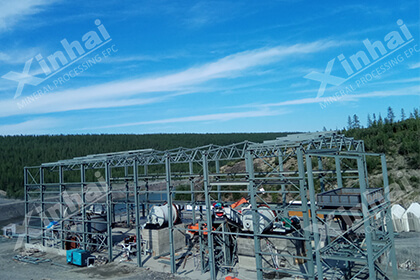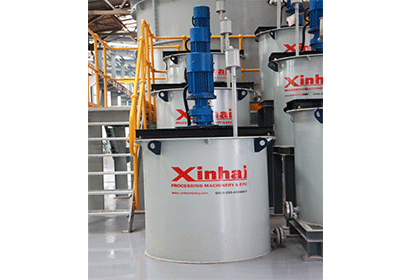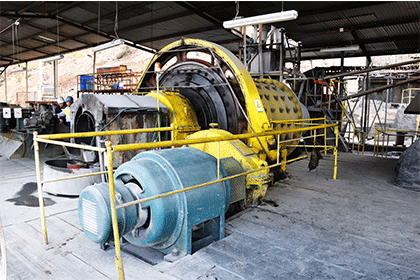Belt Conveyor Common Problems and Solutions
 Sharon
Sharon
 Feb 07, 2021
Feb 07, 2021
 1769
1769
If you want to know more details about equipment, solutions, etc, please click the button below for free consultation, or leave your requirements!
Generally, during the operation of the belt conveyor, improper operation and unreasonable maintenance will cause some common faults, such as belt deviation, ore spilling, belt slippage, etc. So, how should we solve these failures? Let's learn about it together through this article.
01 Belt
BackBelt deviation is the most common fault when the conveying equipment is running. The operators should adopt different solutions according to different reasons for deviation to effectively solve the problems.
(1) Adjustment of Load Roller Set
The perpendicularity error between the load rollers and the conveyor centerline is large, which causes the belt to deviate to one side in the load section. The solution is the belt roller group to which side, which side of the belt toward the direction of forward or backward on the other side.
(2) Installing the Centering Roller Set
The principle is to use the roller group to rotate in the horizontal plane to generate transverse thrust to make the belt automatically centripetal to adjust the belt deviation.
(3) Adjustment of the Position of Unloading Drum and Redirecting Drum
The adjustment of unloading and redirecting drum is the key to solve the problem of belt deviation. Usually, a belt conveyor has at least 6-8 drums, and all the drums must be installed perpendicular to the center line of the belt conveyor length, if the skew is too large, the belt will run off at the unloading drum or redirecting drums.
The adjustment method is as follows: for the unloading drum, if the tape runs off to the right of the drum, the right bearing seat should be moved forward. If the tape runs off to the left of the drum, the left bearing seat should move forward. Correspondingly, the left bearing seat or the right bearing seat can be moved backward. The tail drum is adjusted in the opposite way as the unloading drum. It is adjusted repeatedly until the belt is in the desired position. It is recommended that the unloading or redirecting drum be installed in the correct position before adjustment.
(4) Adjustment of Tension Force
The adjustment of the belt tension force is a very important part of the belt conveyor deviation adjustment. The tensioning device of the conveyor makes the tension of the belt insufficient. The tape will not deviate when there is no load or a small load, but the deviation will occur when the load is larger. The tensioning device is an effective device to ensure that the belt is always maintained with sufficient tension. If the tension is insufficient, the stability of the belt will decrease, and the belt will be greatly affected by the interference of external forces, which will easily cause slippage.
In the case of conveying equipment using screw tensioning or hydraulic tensioning, the tensioning stroke can be adjusted to increase the tensioning force. However, if sometimes the tensioning stroke is no longer sufficient and the belt is permanently deformed, a section of the belt can be cut off and re-glued.
(5) Adjustment of Drum Diameter
Different diameters caused by machining error, ore sticking or uneven wear on the surface of the drum, and the belt will run to the side with the larger diameter. This is known as "bigger side not smaller side". The solution is to clean up the sticky mineral on the surface of the drum. For the problems of machining error and uneven wear, the drum should be replaced and rewrapped with rubber.
(6) Adjustment the Discharge Position at Loading Point
The discharge position at the loading point has a great influence on the belt offset. Especially when the two belts are projected perpendicular to each other in the horizontal plane. If the ore discharge is to the right, the belt will run to the left and vice versa. In order to reduce or avoid the belt offset, the ore baffle can be added to change the direction and position of the ore flow.
(7) Adjustment of Belt Itself
Problems with the belt itself, such as aging deformation, edge wear, or the wrong center of the joint, which will cause the tension on both sides of the belt to be inconsistent and lead to deviation. In this case, the belt will run off to one side over the entire length of the belt. The only remedy is to replace the misaligned joint with a new one, or to replace the old and deformed part of the belt.
02 Ore Spilling
BackThere are many reasons for the belt conveyor ore spilling, the solution lies in strengthening the belt conveyor daily maintenance.
(1) Ore Spilling at Transfer Point
Ore spilling at the transfer point is mainly at the ore blocking plate. The reasons for ore spilling include severely overloaded, damage to the ore blocking plate and belt deviation. The above situation can be solved by controlling the transportation capacity and strengthening maintenance.
(2) Ore Spilling in Overhang of A Concave Belt Section
When the curvature radius of the concave section of the belt is small, the belt will overhang and leave the chute-shaped roller group. At this time, the chute angle becomes smaller and the ore spattering occurs. Therefore, a larger radius of curvature of the concave section should be adopted in the design stage to avoid such a situation.
(3) Ore Spilling When Belt Deviates
Ore spillage occurs when the belt is running deviation is because the height of the two edges of the belt changes when the belt is running, with one edge being higher and the other edge being lower, and the material is spilled out of the lower edge.The solution is to adjust the deviation of the belt.
03 Belt Slippage
BackBelt slippage is one of the common faults of conveying equipment, there are many reasons for this failure.
(1) Belt Slippage of Hammer Tensioning Belt Conveyor
In the case of a belt conveyor using a hammer tensioning device, a counterweight can be added to the belt until it does not slip. But it should not be added too much, so as not to reduce the service life of the belt due to excessive tension.
(2) Belt Slippage of Winch Tensioning or Hydraulic Tensioning Belt Conveyor
When the belt conveyor with winch tension or hydraulic tension slips, the tension stroke can be adjusted to increase the tensioning force. However, sometimes the tensioning stroke is not enough and the belt is permanently deformed. At this time, the belt can be cut off and rejoined.
04To Wrap Up
BackIn the mineral processing plant, the belt conveyor will inevitably cause the belt deviation, ore spill, belt slippage and other faults after run for a long time. These faults bring difficulties to the latter process, which requires the operator to find out the common causes of failure and deal with them in a timely manner, to ensure that the equipment parameters are normal, so that the belt conveyor can run smoothly. If you have any questions about the belt conveyor, welcome to submit a message and inquire our online service.
 +86 18716000713
+86 18716000713 xlyin@xinhaimining.net
xlyin@xinhaimining.net




 Message
Message Chat Now
Chat Now


















